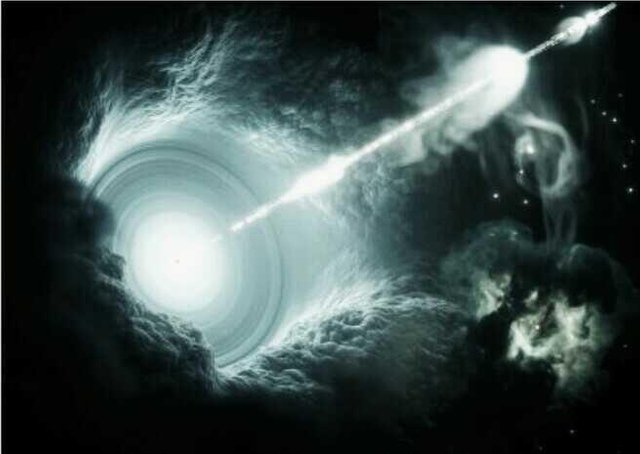A ghostly particle detected in Antarctica has led astronomers to a exquisite-big spinning black hole referred to as a 'blazar'

BRIEFING
A ghostly particle detected in Antarctica has led astronomers to a wonderful-big spinning black hole referred to as a 'blazar'.
DESY/technology verbal exchange Lab
An instance of a blazar, or a spinning black hole that gobbles up rely and shoots out jets of excessive-power radiation and particles.
The beginning of the universe’s maximum effective cosmic rays, or excessive-speed debris, has for many years been tough to determine.
Astronomers these days used ghostly particles called neutrinos to affirm the source of high-energy cosmic rays.
IceCube, a massive detector embedded within the ice of Antarctica, led to the invention.
massive, swiftly spinning black holes called blazars appear to emit cosmic rays.
Astronomers say they've greater or less showed a key source of cosmic rays – some of the best-electricity yet most enigmatic radiation within the universe – with the detection of a single “ghostly” particle in Antarctica.

Cosmic rays were discovered greater than one hundred years ago, but their origins are tough to understand for positive due to the fact they can be deflected en direction to Earth, and our planet’s atmosphere absorbs most of them.
Researchers detected the “ghost” particle, or neutrino, in September the use of IceCube, a large array of sensors embedded deep within the ice of Antarctica. The neutrino became strangely active, and while scientists tracked the particle again to its supply they observed a galactic monster known as a blazar: a rapidly spinning black hollow, millions of times the mass of the sun, that’s gobbling up gasoline and dust.
The blazar is referred to as TXS 0506+056, and it seems inside the sky just below the arm of the constellation Orion. The supermassive black hole is located four billion mild-years from Earth, inside the core of what’s known as an lively galaxy.
Orion constellation blazar vicinity desy nrao university leicester
The vicinity (green target) of blazar TXS 0506+056 in the arm of the constellation Orion.
After the high-energy neutrino’s detection, IceCube alerted different astronomers, who aimed a collection of light-primarily based observatories at the blazar. the ones telescopes and detectors captured a huge burst of other radiation.
“this is the primary proof that we've got of an lively galaxy emitting neutrinos, which means we might also soon start watching the universe the usage of neutrinos to study more about these objects in methods that might be impossible with mild by myself,” Marcos Santander, an astrophysicist at the college of Alabama,stated in a press launch.
Santander and dozens of others have unique their research in research published Thursday within the journal science. the first take a look at hyperlinks the high-energy neutrino – which researchers trust become generated by cosmic rays – to the blazar. the second shores up greater proof for the link by locating many more decrease-electricity neutrinos reputedly emanating from the blazar.
Erin Bonning, an astrophysicist at Emory college who studied blazars and wasn’t concerned inside the studies, said the work – if the statistical information undergo out – is “truly cool” because it’s simplest the second one time that a excessive-strength neutrino has been linked to supply outside our solar gadget. the first became a couple dozen neutrinos emitted via a supernova in 1987.
Blazars represent a doubtlessly large source of cosmic rays, because there are masses of billions of galaxies in the visible universe and at any time about 10% are “lively,” meaning they’re ingesting count number. Feeding black holes shoot out jets of excessive-electricity radiation and particles at close to the speed of mild, and maximum of the time they’re no longer pointed at Earth.
The aspect that makes a blazar distinct from energetic galactic nuclei is that a blazar is while Earth is calling down the barrel of a jet,
Bonning said.
Interesting topic and exciting.There is a lot of scope for mankind in the field of cosmology
It's difficult for me to comprehend your article due to the complexity of its information but never mind that. There are a few things I would like to state here:
Congratulations @salimberry! You have received a personal award!
Click on the badge to view your Board of Honor.
Congratulations @salimberry! You received a personal award!
You can view your badges on your Steem Board and compare to others on the Steem Ranking
Vote for @Steemitboard as a witness to get one more award and increased upvotes!